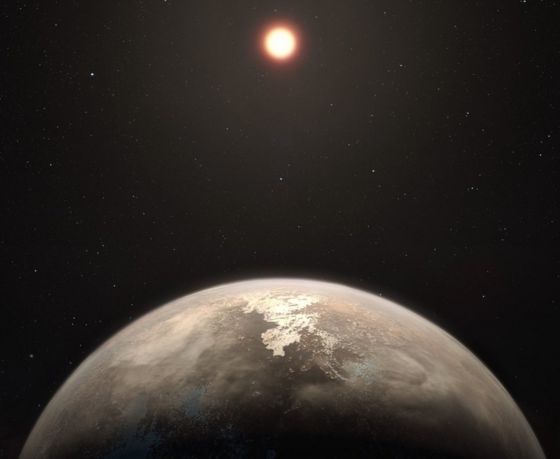
Astronomers have found an Earth-sized planet with mild temperatures that`s also relatively close to our Solar System.
The properties of this newly discovered planet - called Ross 128 b - make it a target in the search for life elsewhere in the cosmos.
At just 11 light-years away, it`s the second closest exoplanet of its kind to Earth.
The closest one, known as Proxima b, may be less hospitable for life.
The new world was discovered by a team using the High Accuracy Radial velocity Planet Searcher (Harps) instrument at the La Silla Observatory in Chile. The work will be published in the journal Astronomy & Astrophysics.
Where should we look for alien life?
Ross 128 b orbits 20 times closer to its star than the Earth orbits the Sun. But because its parent star - a red dwarf - is much smaller and dimmer than our yellow sun, it receives only a little more solar radiation than our own planet.
Consequently, it is expected to have a surface temperature close to that on Earth.
Co-discoverer Nicola Astudillo-Defru from the Geneva Observatory in Switzerland said the find was the result of more than a decade of intensive monitoring using the Harps instrument.
In the search for habitable worlds beyond our Solar System, astronomers generally look for low-mass, rocky and temperate planets much like our own.
But these are comparatively difficult to detect; most of the 3,500 known exoplanets are so-called Hot Jupiters - huge gas giants orbiting very close to their parent stars that likely don`t have suitable conditions for life.
Of the smaller contingent of Earth-sized planets, the vast majority orbit so-called red dwarf stars - the most common type. These stars are dim, which makes it easier to detect low-mass planets when they pass in front, blocking out a portion of their sunlight.
But these stars may not create the best conditions for sustaining life on orbiting planets. They are often more active than our own Sun - meaning they periodically produce "superflares", which are associated with powerful eruptions that would batter any nearby worlds with harmful radiation.2 light-years away, Proxima b is the closest exoplanet with a mild temperature. But it orbits a rather active red dwarf and, as a result, receives about 30 times more extreme ultraviolet radiation than Earth. However, Ross 128 b is the "quietest" nearby star to host a temperate exoplanet.
Astronomers often talk about a "habitable zone" around a star - it`s the range of distances where temperatures allow water to remain liquid on the surface of a planet. Where the habitable zone is depends on the star itself: red dwarfs are dimmer and therefore cooler than the Sun, so their habitable zones are shifted closer in than the equivalent zone around our star.
There`s still uncertainty about whether Ross 128 b is within the habitable zone, but scientists say that with temperatures of between -60 and +20°C, it can be considered temperate.
Follow Paul on Twitter.


0 comments:
Post a Comment